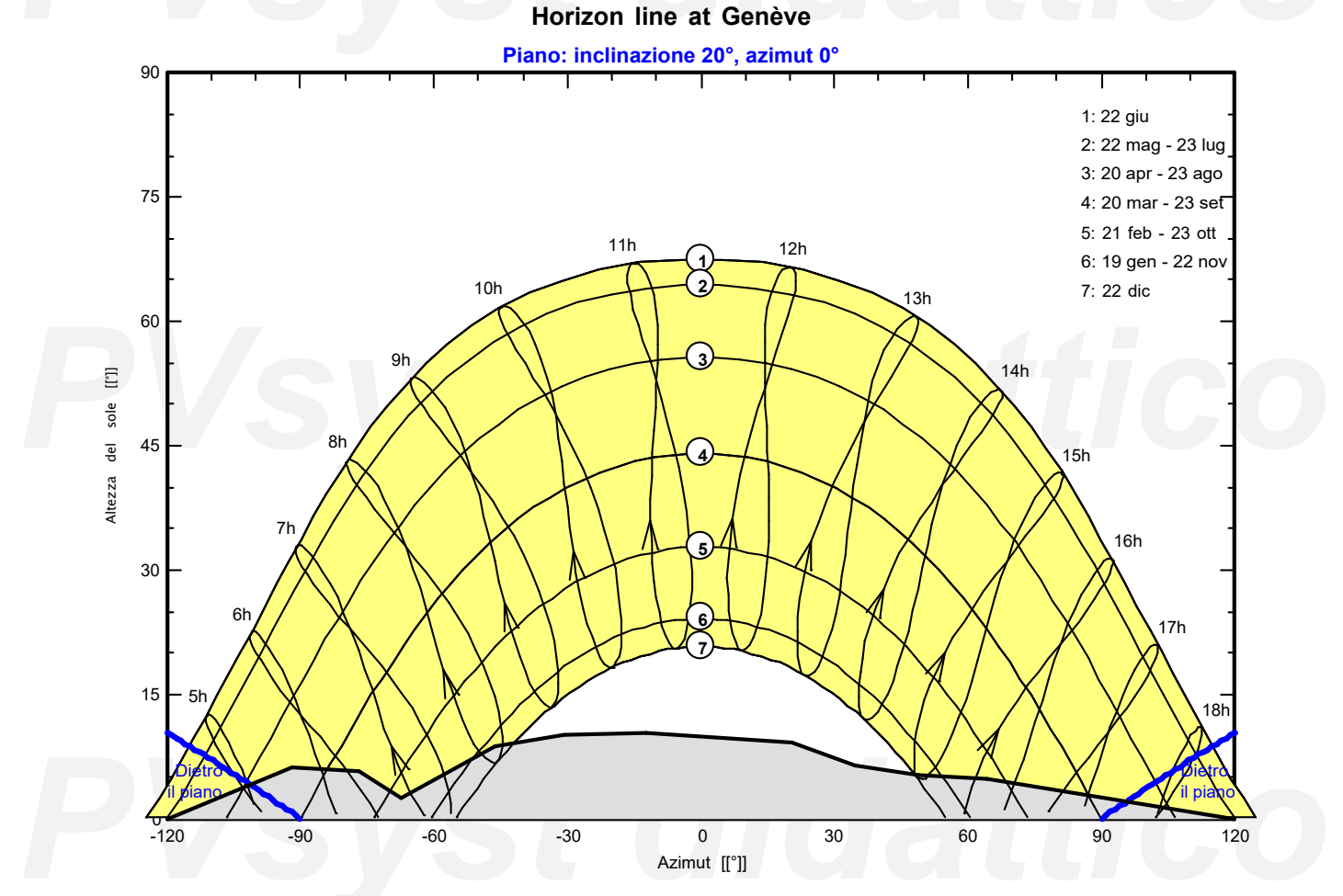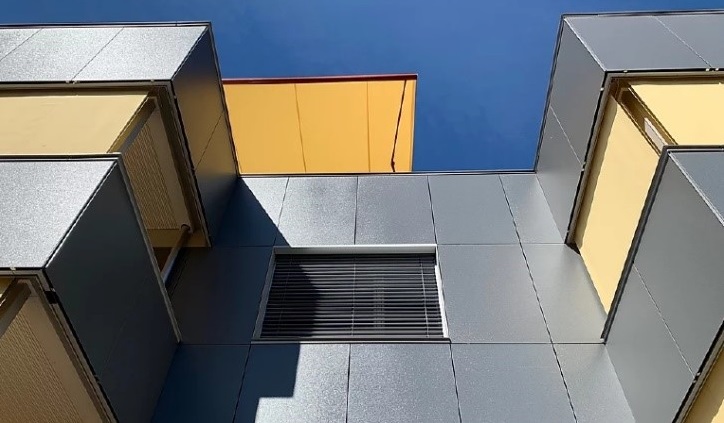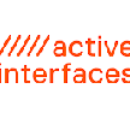Shading reduces PV efficiency and could cause safety issues triggered by different levels of current in the solar cells. In case of partial shading, the covered cells act as heat dissipators. This phenomenon, known as „hot-spot“, causes an increase in module temperature that can reach values above 100°C. To avoid damaging the shaded cells, by-pass diodes are incorporated in the module to allow the current flow and to avoid it passing through the shaded cell. Ideally, a by-pass diode would be equired for each cell, in reality they are fitted on each cell string.
Sun path and rough sketch of the horizon line elaborated through PVSyst. Source: SUPSI-ISAAC.
_____
Urban factors are constraints related to the process of urban development such as:
– urban density: in dense built areas, the proximity of the building fronts along roads makes facades difficult to exploit for energy purposes, as they are heavily shaded;
– urban objects: shading caused by vegetation in avenues or in courtyards, as well as street infrastructures, can reduce PV production and could cause safety issues;
– urban planning densification: urban densification plans define rules for urban development where self-shading and the overshadows of (new) adjacent buildings could greatly affect solar energy potential and daylight availability.
_____
Building factors are constraints related to the building typology such as:
– building size & shape orientation: the size and the geometry of the building define the main technical possibilities of photovoltaic implementation. In addition, the orientation of the building has an impact on the solar production. It is important to install PV on different exposed facades for increasing self-consumption by optimizing the daily profile of energy production;
– articulation: the “building articulation” represents the different parts of a building form such as balconies, windows, slab bands, loggias, canopies, etc. which could form projecting surfaces and/or recessing elements that cause a reduction of the surface suitable for energy production. Nevertheless, it is possible to maximize the exploitable PV surface by carefully adapting PV claddings to these building elements or taking advantage of a building re-shaping in case of renovation.
Shading situations. Source: IEA PVPS.
On one hand we have technical solutions (such as an accurate electrical wiring, the use of appropriate PV technology and a rational energy management) which can moderate/eliminate some of the energy criticalities that building/urban situations can create on a PV installation (e.g. due to shading and/or a non-optimal exposure).
On the other hand, we can focus on BIPV design approach, both in terms of architectural concept and building skin construction, which allows avoiding some of the critical aspects that could affect the PV production, since the early design stage, carefully taking into account basic design rules and optimizing BIPV factors according to the specific urban/building context.







